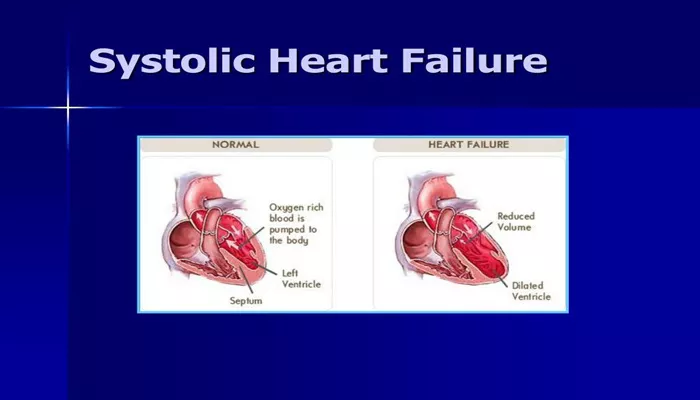Understanding blood pressure is essential for maintaining cardiovascular health. Blood pressure readings consist of two numbers: systolic and diastolic pressures. These two values provide critical information about how well your heart and arteries are functioning. This article explains the difference between systolic and diastolic blood pressure, why both numbers matter, and how they relate to your overall health.
What Is Blood Pressure?
Blood pressure measures the force exerted by circulating blood on the walls of blood vessels, especially arteries. It is expressed as two numbers, written as a ratio (e.g., 120/80 mmHg). The unit “mmHg” stands for millimeters of mercury, a standard measure of pressure.
Blood pressure fluctuates throughout the cardiac cycle, reflecting the heart’s pumping action and the arteries’ resistance.
The Cardiac Cycle: Systole and Diastole
To understand systolic and diastolic pressures, it is important to know the phases of the heartbeat:
Systole: This is the phase when the heart muscle contracts. The heart pumps blood out into the arteries, causing the pressure in the arteries to rise. This is when blood pressure reaches its highest point.
Diastole: This phase occurs when the heart muscle relaxes after contraction. The heart chambers fill with blood, and arterial pressure falls to its lowest point.
What Is Systolic Blood Pressure?
Systolic blood pressure is the top number in a blood pressure reading. It represents the pressure in your arteries when the heart contracts and pushes blood out. This pressure reflects how much force your heart exerts to circulate blood throughout your body.
A normal systolic blood pressure is usually less than 120 mmHg.
Systolic pressure below 90 mmHg is considered low and may require medical attention.
Readings consistently above 130 mmHg indicate elevated blood pressure, and values over 180 mmHg are dangerously high and require immediate care.
Systolic pressure is a key indicator of cardiovascular risk because it shows how hard your heart is working during each beat.
What Is Diastolic Blood Pressure?
Diastolic blood pressure is the bottom number in a blood pressure reading. It measures the pressure in your arteries while the heart is resting between beats. During diastole, the heart refills with blood, and arterial pressure decreases.
Normal diastolic blood pressure is usually less than 80 mmHg.
Diastolic pressure below 60 mmHg may be considered low.
Elevated diastolic pressure above 80 mmHg can indicate hypertension.
Diastolic pressure reflects the resistance in the arteries when the heart is at rest and is important for understanding overall vascular health.
Why Both Numbers Matter
Both systolic and diastolic pressures provide important information about your cardiovascular system:
Systolic pressure indicates how much pressure your blood exerts against artery walls during heartbeats. High systolic pressure increases the risk of heart attack, stroke, and other cardiovascular diseases.
Diastolic pressure shows the pressure in arteries between beats. Elevated diastolic pressure can signal stiff or narrowed arteries, increasing cardiac workload.
The difference between systolic and diastolic pressure, known as pulse pressure, also offers clues about arterial health. A very wide or narrow pulse pressure may indicate underlying conditions.
Doctors evaluate both numbers to diagnose hypertension (high blood pressure) or hypotension (low blood pressure) and to assess your risk for heart disease.
How Blood Pressure Is Measured
Blood pressure is typically measured using a sphygmomanometer, which includes an inflatable cuff wrapped around the upper arm and a gauge that measures pressure.
The cuff inflates to temporarily stop blood flow.
As it deflates, the device detects the pressure at which blood begins to flow again (systolic pressure) and when it flows freely without restriction (diastolic pressure).
Regular monitoring of blood pressure helps detect changes early and guides treatment decisions.
Normal and Abnormal Blood Pressure Ranges
| Blood Pressure Category | Systolic (mmHg) | Diastolic (mmHg) |
| Normal | Less than 120 | Less than 80 |
| Elevated | 120-129 | Less than 80 |
| Hypertension Stage 1 | 130-139 | 80-89 |
| Hypertension Stage 2 | 140 or higher | 90 or higher |
| Hypertensive Crisis | Higher than 180 | Higher than 120 |
High blood pressure is a major risk factor for heart disease and stroke. Low blood pressure can cause dizziness, fainting, and inadequate blood flow to organs.
Factors Affecting Systolic and Diastolic Pressure
Several factors influence your blood pressure readings:
Age: Systolic pressure tends to rise with age due to arterial stiffening.
Physical activity: Exercise temporarily raises systolic pressure but lowers it long-term.
Stress and emotions: Can increase both systolic and diastolic pressure.
Medications: Some drugs affect blood pressure directly.
Health conditions: Kidney disease, hormonal disorders, and heart problems impact blood pressure.
Understanding these factors helps manage and interpret blood pressure readings accurately.
Managing Blood Pressure for Heart Health
Maintaining healthy systolic and diastolic pressures reduces the risk of cardiovascular disease. Strategies include:
- Eating a balanced diet low in salt and saturated fats
- Regular physical activity
- Avoiding tobacco and excessive alcohol
- Managing stress
- Taking prescribed medications as directed
Regular blood pressure monitoring is essential, especially for older adults or those with risk factors.=
Conclusion
Systolic and diastolic blood pressures are two critical numbers that describe the force of blood against your artery walls during and between heartbeats. Systolic pressure is the higher number, reflecting the pressure during heart contraction.
Diastolic pressure is the lower number, indicating pressure when the heart relaxes. Both values are vital for assessing cardiovascular health and guiding treatment. Keeping these numbers within normal ranges through lifestyle and medical care helps prevent serious heart and vascular diseases.
Related topics:


